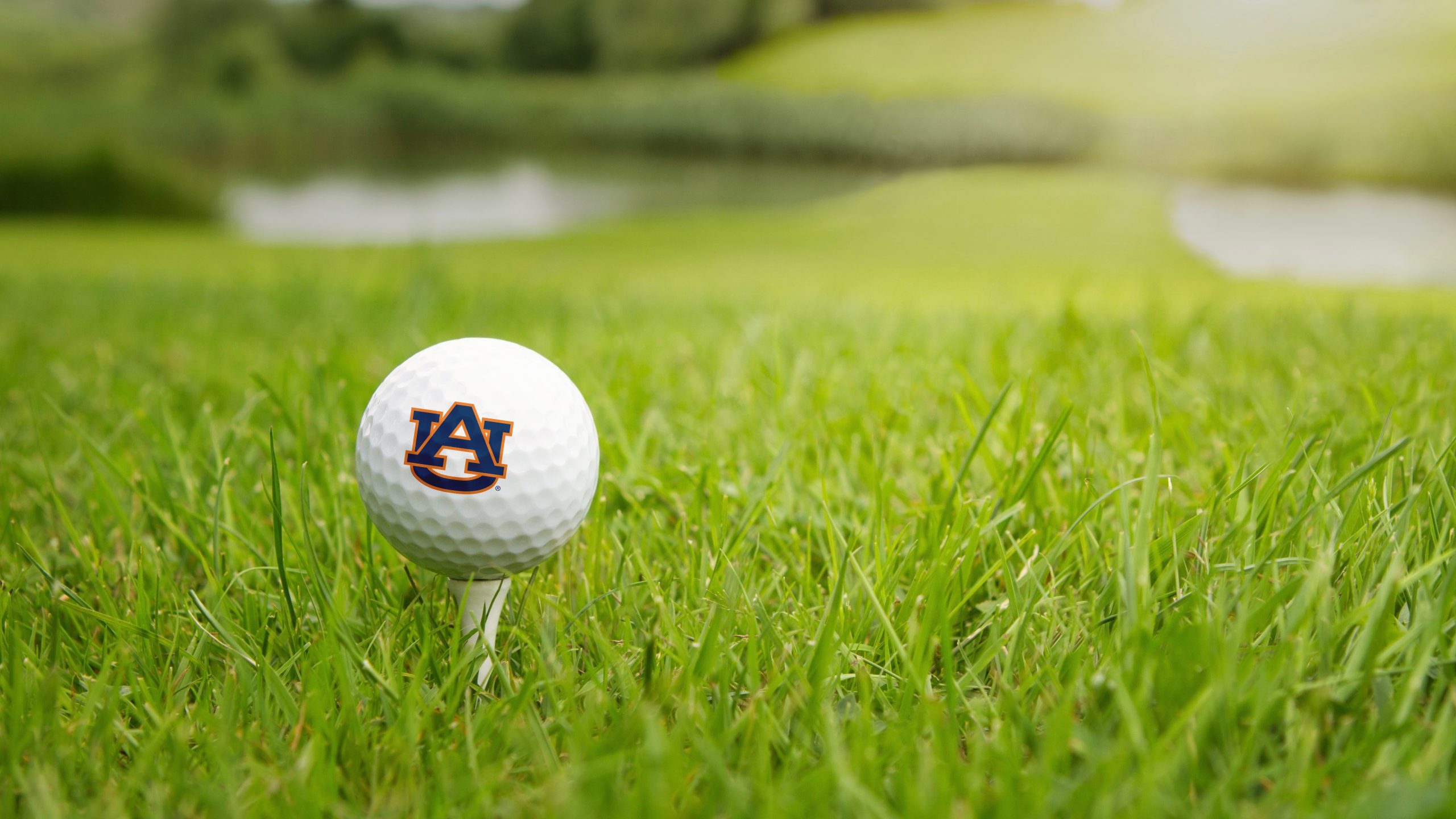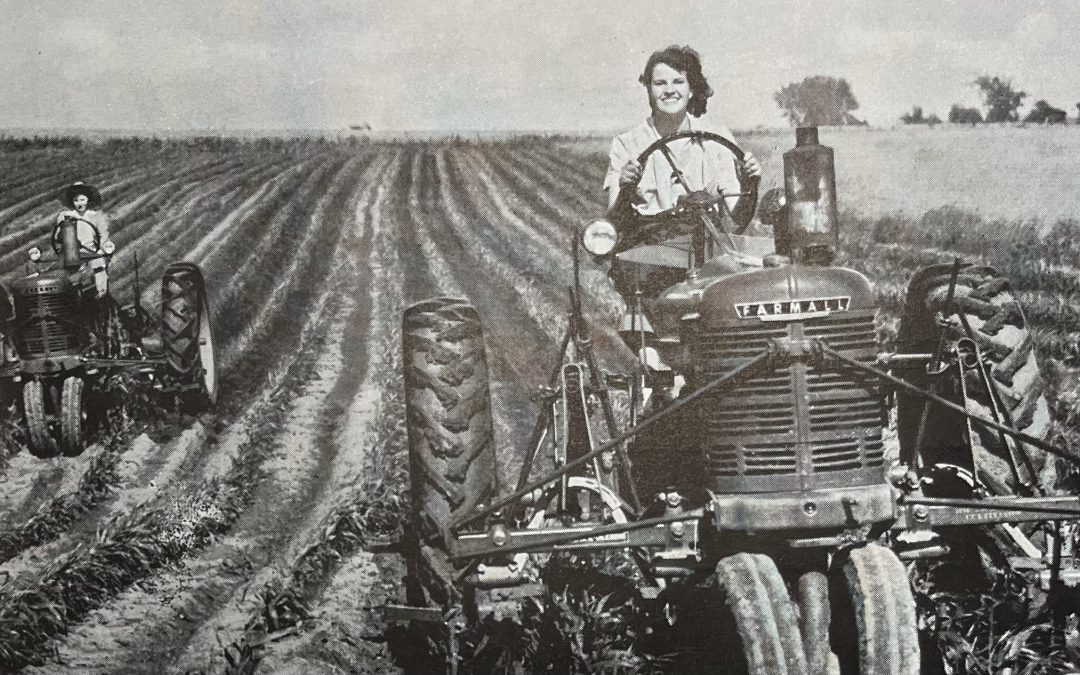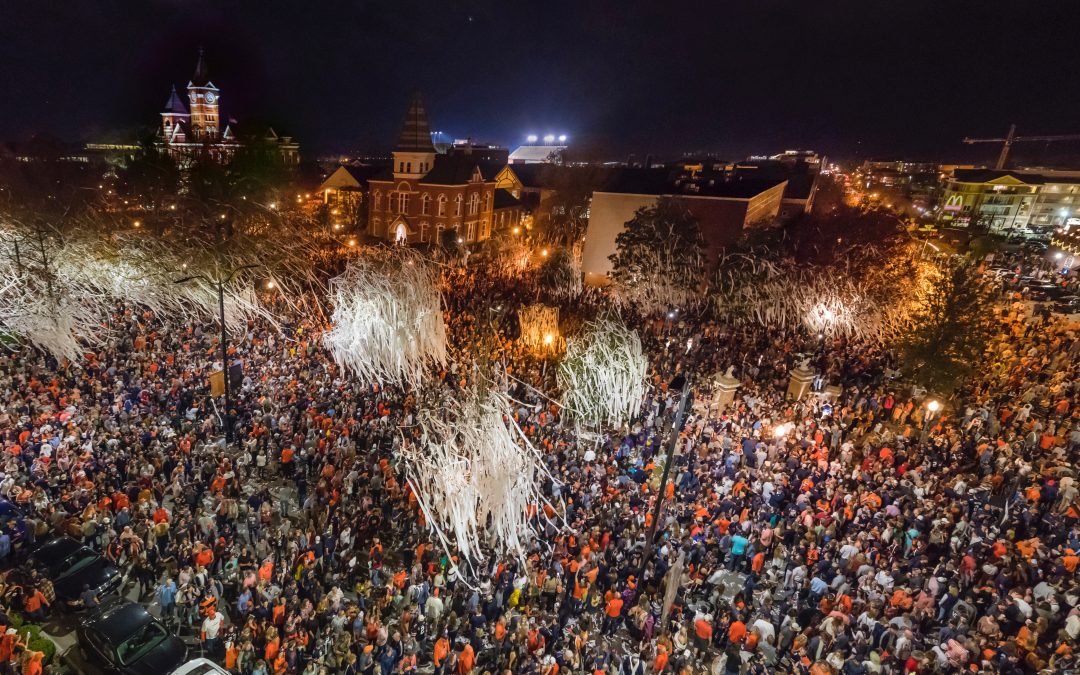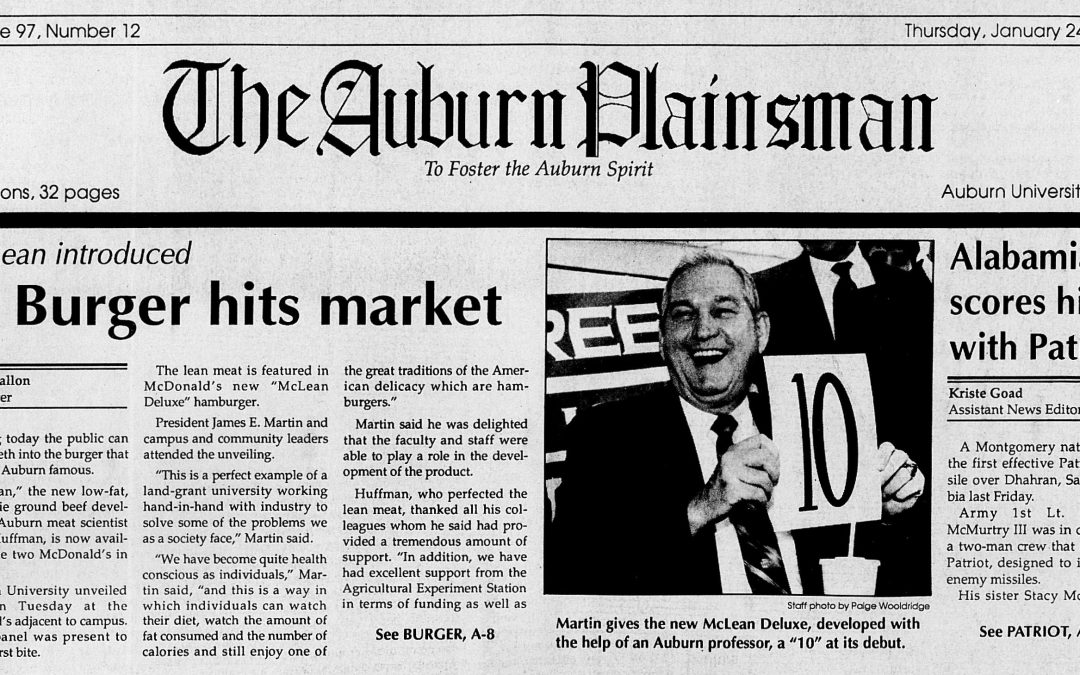U.S. suburb, golf boom in 1960s fueled today’s turfgrass management
By Mike Jernigan
THROUGHOUT THE 2022-2023 ACADEMIC YEAR, THE COLLEGE OF AGRICULTURE IS CELEBRATING ITS 150TH ANNIVERSARY WITH CONTENT SHARED FROM ITS SPECIAL EDITION, COLLECTOR’S BOOK OF THE SEASON, PUBLISHING IN 2023.
Although it took a while for the game of golf to work its way to Alabama — the first ever 18-hole course opened in St. Andrews, Scotland, in 1764 and Alabama got its first course at the Country Club of Birmingham in 1903 — the search for a better turfgrass for both sporting venues and home lawns and gardens has been an ongoing one in the Auburn University College of Agriculture for many years.
While the earliest research in the Department of Agriculture — later the Department of Agronomy and Soils and today the Department of Crop, Soil and Environmental Sciences — focused on food and commercial crops like cotton and peanuts, by the 1920s faculty members at the then-Alabama Polytechnic Institute were also looking into weed control and grasses that might better weather the heat and moisture conditions of the Southeast. In 1927, legendary API Professor D. G. Sturkie introduced zoysia matrella, also known as Manila grass, to the state as a variety that could thrive even in Alabama’s hot, dry summers. According to many landscape architects and lawn lovers, zoysia remains “the best lawn grass for the South” even today.
But as it turned out, Sturkie’s research was a little ahead of events. The Great Depression turned the nation’s agricultural focus firmly back on more traditional crops. During the next decade, most Americans had little time for leisurely pursuits like ornamental gardens or golf as they struggled through the worst economic era the nation had ever known. Following on the heels of the Depression, the Second World War kept the focus on commercial agriculture to feed the millions of troops in the military, along with home “victory gardens,” aimed at supplementing rationed foods with fresh vegetables and fruits.
But unknowingly, the war was also planting the seeds for the worst of times for turfgrass progress to become the best of times. After the war, millions of troops came back home and took advantage of the new G.I. bill benefits offered by a grateful nation to launch businesses or finish college degrees. U.S. industrial production gradually shifted back from wartime production to launch an avalanche of new products in a thriving economy. Better economic conditions helped encourage a baby boom, and by the 1960s Americans were moving to newly constructed homes in the suburbs like never before. Between 1940 and 1960, national home ownership grew from 44 percent to 62 percent of the population, and a key feature of the new subdivisions springing up across the country was a small lawn framing every house.
“With the rise of suburbia in post-WWII America, the perfect lawn became a potent symbol of the American dream,” journalist Farrell Evans wrote for The History Channel in 2021. “Whether a sprawling sweep of green mowed in crisp diagonal bands or a more modest swatch of grass and clover, a lawn expressed the national ideal that, with hard work, sacrifice and perhaps a little help from Uncle Sam, home ownership and a patch of land could be within the reach for every American.”
In addition to lawns, many of these new subdivisions also featured golf courses. As golf became a sport within reach of the American middle class flocking to the suburbs, the 1960s became a “boom time” for the development of new courses, all of which needed more durable turfgrass. Approximately 25 percent of the courses built each year during the decade were constructed as part of a real estate development. In 1966, CBS televised the Master’s Golf Tournament from Augusta, Georgia, in color for the first time, giving millions of Americans a view of beautiful turfgrass they could aspire to for themselves.
“Virtually everywhere golf courses exhibit magnificent turf, often through 12 months of the year,” Sports Illustrated wrote later that same year. “and having seen what is possible, millions of homeowners feel compelled to go and do likewise.” In addition to lawns, other sports venues, from football stadiums to Little League baseball fields dotting the new suburbs, also mushroomed during the decade, stimulating the need for turfgrass research and development like never before.
This demand led to increased emphasis on turfgrass studies and weed science in the Department of Agronomy and Soils at Auburn University — which API had become in 1960. The Alabama Turfgrass Association, a cooperative group for the collection, preservation and dissemination of information concerning all aspects of turfgrass, was formed at Auburn in 1961. In 1977, a Turfgrass Research Unit was opened just off the edge of the university campus. And in the late 1990s, Alabama representatives of the Golf Course Superintendent’s Association met with College of Agriculture administrators to lobby for the launch of a turfgrass degree program, which was instituted with the publication of the 1998-99 course catalog. Within two years, approximately half the undergraduate students in Agronomy and Soils were in the turfgrass track.
Today, turfgrass management continues to be one of the most popular majors in the College of Agriculture. According to Scott McElroy, a professor in the Department of Crops, Soils and Environmental Sciences, approximately 20 percent of CSES students are usually enrolled in the curriculum. Not surprising, since the sports turfgrass management industry employs more than half a million people in the U.S. alone and Americans spend in excess of $15 billion on their lawns and landscaping each year. Graduates in the Auburn Turfgrass Management curriculum can seek careers in a variety of areas including sports turf development and management, golf course maintenance and construction, land use and weed science, as well as many others.
In addition to training future industry professionals, sharing Auburn research into new turf varieties and pest control — conducted at the Turfgrass Research Unit — continues to be a priority and builds on the department’s historical outreach legacy. “We conduct a field day every year for practitioners,” McElroy says, “speak at six different road shows across the state and run the educational program at the Deep South Turf Expo in Biloxi, Mississippi, each year.”
Much of the information shared at these events has practical applications both for lawn enthusiasts as well as industry professionals. “Pest and nutrient management are a couple of the biggest needs,” McElroy explains. “People want to know how to navigate the many products available to control weeds, diseases and insects. There are lots of options available out there, and we try to provide as much information as we can to help them decide what’s best for their needs.”
The path from the introduction of zoysia matrella to Alabama by D. G. Sturkie in 1927, on to the explosive expansion of the turfgrass industry in the decade of the sixties, and finally to the nationally recognized turfgrass management program in today’s CSES Department, has been a long and winding one. But the mission hasn’t changed, and it is still one the legendary professor would recognize all these years later — to provide vital support and information to the state’s many lawn enthusiasts as well as its ever-growing turf industry.





